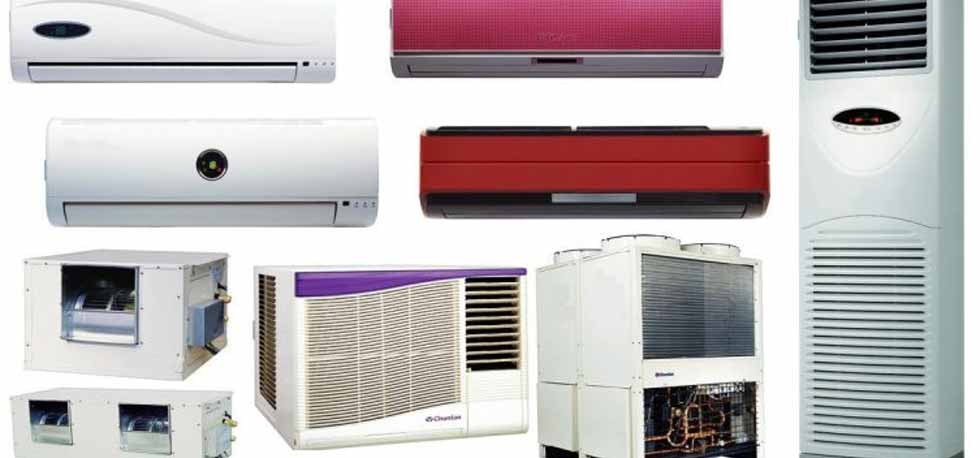
Getting to Know AC Types: Split, Portable, Central, and Many Others
Choosing the right air conditioner (AC) type is crucial for comfort and energy efficiency. With various options available, understanding the differences between split, portable, central, and other AC systems can be daunting. This guide will break down each AC type, outlining their features, benefits, drawbacks, and ideal applications, empowering you to make an informed decision for your specific needs. We’ll also cover considerations like cost, installation, and maintenance to ensure you make the best choice. By the end, you’ll have a comprehensive understanding of AC types and be equipped to select the perfect system for your home or business.
Understanding the Spectrum of AC Units
Types of Air Conditioning Systems:
Air conditioning systems are essential for maintaining a comfortable indoor environment, especially during hot and humid seasons. Understanding the diverse types of AC systems available allows you to select the one that perfectly matches your requirements. From split systems to portable units and central AC systems, each boasts unique advantages and disadvantages tailored to specific situations. This article will dive deep into the nuances of each type, enabling you to choose the ideal system for your lifestyle and budget.
Different AC Systems and Their Characteristics
Split systems are the most common and widely used type of AC units, featuring an outdoor compressor unit and an indoor air handler. Portable AC units are compact and ideal for smaller spaces or temporary cooling needs, while central AC units offer comprehensive cooling for entire homes or buildings. The choice between these various types significantly impacts energy consumption and long-term costs. Consider your priorities – aesthetic integration, space restrictions, and energy efficiency metrics – before making a selection.
Split Systems: The Popular Choice
The Functionality of Split Systems
Split systems, a common choice for many homeowners, combine an outdoor compressor unit with an indoor air handler. The outdoor unit handles the cooling process, while the indoor unit distributes cooled air throughout the space. Their efficiency and effectiveness make them a popular option. These systems are usually energy-efficient, leading to lower operating costs in the long run.
Portable Air Conditioners: Budget-Friendly Solutions
Portable AC Units: A Space-Saving Option
Portable air conditioners are compact and ideal for smaller rooms, apartments, or temporary cooling needs. They’re often more budget-friendly than other options and can be moved easily as needed. However, portable AC units often have lower cooling capacity compared to split systems.
Central Air Conditioning: Comprehensive Cooling
Central AC: A Home-Wide Cooling Solution
Central AC systems offer a comprehensive solution for cooling an entire home or building. Central units are generally more energy-efficient than portable systems over the long run for large homes. However, installation can be more complex and costly than with split systems. Central AC systems require regular maintenance to ensure optimal performance.
Ductless Systems: A Growing Trend
Ductless Systems: The Modern Approach
Ductless systems are a relatively modern approach to air conditioning, which consist of individual indoor units that connect to an outdoor condenser unit. Ductless systems are suitable for specific requirements like newer buildings or additions where central AC is not feasible. These systems are often more flexible for installation than other choices. They can be a good alternative to central AC in various situations.
Ductless Air Conditioner: Innovative Solutions
Ductless Units and their Design
Ductless air conditioners, as the name implies, are a distinct type of cooling solution. They eliminate the need for ductwork often associated with central systems, offering significant flexibility in installation. This type of AC is especially well-suited for renovations or new spaces that lack pre-existing ductwork. Their installation process is usually more straightforward than a complete central AC system, and many models boast high energy efficiency.
Understanding AC Energy Efficiency Ratings
SEER and Energy Efficiency
AC units are rated based on their seasonal energy efficiency ratio (SEER). A higher SEER rating translates to lower energy consumption and lower utility bills. Choosing a system with a high SEER rating is crucial for long-term cost savings. This is often a key factor for many homeowners.
Installation Considerations
AC Installation: Professional Help
Installation is crucial for proper AC function. Professional installation ensures that your system is properly sized for your space and operates at peak efficiency. Poor installation can lead to significant problems, from uneven cooling to increased energy consumption.
Maintenance and Repair
Maintaining AC Performance
Regular maintenance is essential for maintaining the performance and lifespan of your air conditioning system. Following a regular maintenance schedule prevents breakdowns, improves energy efficiency, and ensures optimal cooling. This preventative maintenance is important to prevent costly repairs in the future and keeps your system operating reliably and smoothly for many years.
Frequently Asked Questions
What are the different types of AC units available?
Different air conditioning (AC) systems cater to various needs and preferences. Common types include split systems, portable AC units, central AC systems, and even ductless systems. Each system boasts unique features, pros, and cons depending on the specific conditions and requirements of your space.
What are the pros and cons of split systems?
Split systems are a popular choice because they are energy-efficient. One of the pros is their energy efficiency which can result in lower utility costs. Split systems tend to be aesthetically pleasing and integrate well into existing decor compared to some other types of units. However, installation costs can sometimes be higher and often require a professional.
In conclusion, understanding the various AC types, from split and portable to central and even more specialized systems, empowers you to make an informed choice tailored to your specific needs and budget. Remember to consider factors such as space, budget, and energy efficiency. If you’re still unsure, consulting a professional HVAC technician is always a good idea to ensure optimal performance and longevity of your system. Choosing the right AC is crucial for comfort, and this guide will help you navigate the options.